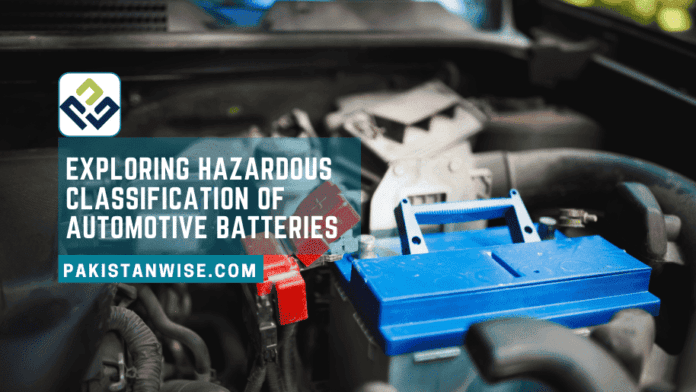Introduction:
Automotive batteries are an essential component of vehicles, providing the necessary electrical power to start engines and operate various systems within a vehicle. While they may seem harmless at first glance, automotive batteries fall under a hazardous classification due to their potential risks. This article aims to delve deep into the hazardous classification of automotive batteries, shedding light on the associated dangers and emphasizing safety measures that must be taken.
Understanding Hazard Classes:
Hazard classes provide a standardized way of categorizing substances based on their inherent properties. Automotive batteries are primarily classified under Class 8 – Corrosive Substances and Class 9 – Miscellaneous Dangerous Substances and Articles.
Class 8: Corrosive Substances
Automotive batteries contain corrosive electrolyte solutions composed mainly of sulfuric acid. Sulfuric acid is highly corrosive, capable of causing severe burns upon contact with skin or eyes. In addition to its corrosiveness, sulfuric acid can emit toxic fumes when heated or spilled, leading to respiratory issues if inhaled.
Class 9: Miscellaneous Dangerous Substances and Articles
Under this class, automotive batteries are classified as dangerous goods due to their potential for generating electric sparks or igniting fires when mishandled or improperly stored. The lead-acid composition of these batteries makes them prone to short circuits if not handled with care.
Risks Associated with Automotive Batteries:
- Chemical Burns: The corrosive nature of sulfuric acid in automotive battery electrolytes poses a significant risk for chemical burns if it comes into contact with skin or eyes.
- Inhalation Hazards: Spilled battery electrolyte can release toxic fumes, leading to respiratory problems if inhaled.
- Fire Hazards: Mishandling or improper storage can result in short circuits within the battery cells, generating sparks that could ignite flammable substances nearby.
- Environmental Impact: Improper disposal or leakage of automotive batteries can lead to environmental pollution, as the chemicals within them can contaminate soil and water sources.
Safety Measures for Handling Automotive Batteries:
- Personal Protective Equipment (PPE): When working with automotive batteries, it is crucial to wear proper PPE, including gloves, safety goggles, and protective clothing to minimize the risk of chemical burns.
- Ventilation: Ensure adequate ventilation in the area where battery handling takes place to prevent toxic fumes from accumulating.
- Proper Storage: Store automotive batteries in a cool and dry place away from flammable materials and direct sunlight. Battery racks or containers specifically designed for battery storage should be used.
- Handling Techniques: When moving or transporting batteries, exercise caution by using proper lifting techniques and avoiding excessive jostling that could lead to electrolyte spills or short circuits.
- Maintenance Checks: Regularly inspect battery terminals for signs of corrosion and clean them if necessary using a suitable cleaner.
Disposal Guidelines for End-of-Life Batteries:
Proper disposal of end-of-life automotive batteries is essential to avoid environmental contamination and ensure safe handling practices.
- Recycling Centers: Locate certified recycling centers that accept used automotive batteries for proper recycling processes.
- Battery Collection Programs: Many cities have battery collection programs where residents can drop off their old car batteries at designated locations instead of disposing of them with regular household waste.
- Manufacturer Take-Back Programs: Some battery manufacturers offer take-back programs where they accept old automotive batteries as part of their commitment to responsible waste management.
Related Article: Audi Explores Partnership with SAIC Motor Corp for Electric Car Platform Acquisition
Conclusion:
Automotive batteries may seem harmless at first glance but fall under hazardous classifications due to their corrosive nature, potential fire hazards, inhalation risks, and environmental impacts if mishandled or disposed of improperly. Understanding these risks is crucial in promoting safety measures when dealing with these essential vehicle components. By following proper handling techniques, wearing appropriate protective gear, and ensuring responsible disposal, the hazards associated with automotive batteries can be effectively mitigated. It is essential to prioritize safety and promote awareness of the risks involved in order to prevent accidents, protect the environment, and safeguard human health.

